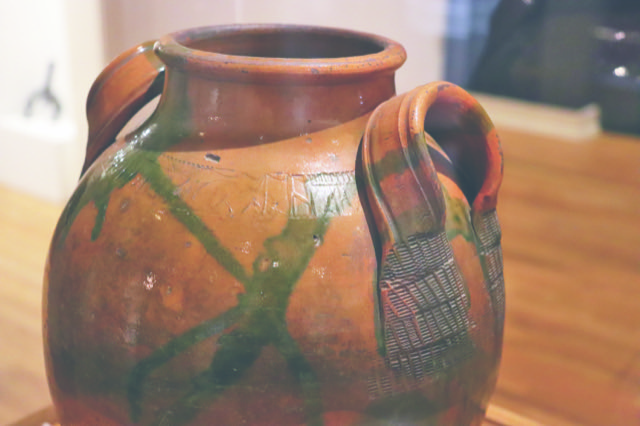

Detail of a Haun jug.
Christopher Alexander Haun was hanged Dec. 11, 1861 for his part in burning the bridge that crossed Lick Creek in Greene County, Tennessee. Despite being part of the Confederacy, Greene County, like other local areas, had mixed sentiments. Some, like Haun, were, in fact, pro-Union, which was demonstrated that fateful night on November 8 when he and 45 other men from the Mohawk-Midway “Potterstown” area burned a new and important bridge used to bring supplies to the Confederate troops camped nearby. “Alex” Haun was 40 years old.
The night before he died, he wrote two letters to his wife, Elizabeth, who was expecting their fifth child, instructing her regarding some pottery ware he had not finished and listing his tools to sell - “lead oven, glazing mill, clay mill, and lathe.” It was many years before these letters finally linked Haun, the bridge-burner, and Haun, the gifted potter.
Working in earthenware, even after mid-century when most potters had switched to stoneware, Haun’s pieces are also distinctive for their decorative stripes and cross-panels of green and brown flourishes of copper and iron oxide. Approximately a dozen known pieces of Haun pottery survive, most bearing his stamped “C A Haun” within a coggled geometric border design under the rim.
This is the sixth in a new series of articles on Tennessee arts and antiques by Betsy K. White, director of William King Museum of Art, Abingdon, Virginia. She is the author of two books on the history of the region’s decorative arts and material culture: “Great Road Style: The Decorative Arts Legacy of Southwest Virginia & Northeast Tennessee” and “Backcountry Makers: An Artisan History of Southwest Virginia and Northeast Tennessee.”